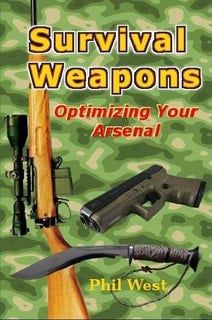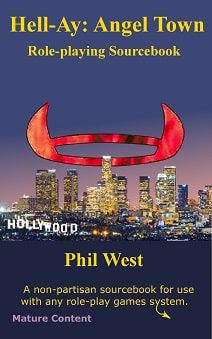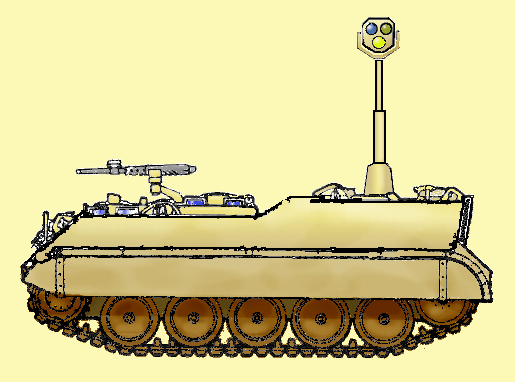By the Author of the Scrapboard : | |
|---|---|
 | Attack, Avoid, Survive: Essential Principles of Self Defence Available in Handy A5 and US Trade Formats. |
 | |
 | Crash Combat Fourth Edition Epub edition Fourth Edition. |
 | |
 | |
Added 14-1-04
Updated 27-3-15
The world's land surface can be classified with respect to two properties.
One of these is the amount of concealment/cover that it offers and this is described by phrases such as open or closed terrain.
The other is how readily the terrain can be moved through or over by vehicles and the Scrapboard chooses to describe this property with phrases such as motorable, motor-traversable, mech-traversable and pedestrian.
Military vehicles that work well in open terrain do not necessarily perform as well in closed terrain.
In closed terrain, you need a vehicle that can negotiate woods or narrow streets or traverse swamps or bodies of water. A vehicle such as the armoured M1114 HMMWV or LAV Stryker has too high a ground pressure to operate on soft ground, restricting its mobility to roads and desert. The Scout HMMWV's vulnerability forces it to move off-road, negating any speed advantages it has over other platforms.
A M113A2/A3 is actually similar in width and length to a HMMWV: 8.8ft x 16ft compared to 7ft x 15ft.
The M113 is obviously taller since it can carry up to 11 men, which requires a certain amount of headroom and elbow space.
Suppose we were to built an M113 designed to carry just 3 to 5 men?
Like an M113 it would be amphibious.
It could be built lower, making it easier to camouflage and harder to spot.
Being tracked it would have superior cross-country mobility to a HMMWV, even if it were heavier and better armoured than a HMMWV.
Such features suggest that it would be a useful reconnaissance or surveillance vehicle.
This vehicle, which we will call the “Terrier” would probably resemble the Canadian Lynx.
The most obvious difference is that I'd give this vehicle five roadwheels like a standard M113A2/A3. This would give a shade more internal room for equipment.
Unlike the US Army’s M114, the hull will not project forward past the front wheels, which gave the M114 considerably poorer cross-country performance than the larger and heavier M113 from which it was derived.
Equipment for the Terrier would include ground surveillance radar (GSR), cameras, recording systems, thermal imagining, a laser rangefinder/designator (LRF/D) and the ability to integrate with remote sensors and a “digitalised” battlefield data network.
A sensor mast of 3 to 4 metres should be practical since similar systems have been mounted on much lighter vehicles.
Small UAV systems such as the FQM-151 Pointer UAV and Dragon Eye may also be used by Terrier crews.
The engine of the Terrier would be mounted at the rear, reducing the frontal acoustic and thermal signature. Noise could be further reduced by the use of band tracks and hybrid-electric diesel drive.
The vehicle would also look a little like the T8, a turretless variant of the M3/M5 Stuart tank.

The Terrier vehicle would have a crew of three, with provision to carry two or three passengers.
Crew would consist of a driver, commander and signaller/observer. The latter would also monitor the various sensor systems and act as an additional machine gunner.
The vehicle would have a rear-view camera system, allowing the vehicle to reverse rapidly under full control. This is generally a good feature for a reconnaissance platform.
Armament of recon vehicles is often hotly debated.
The Terrier vehicle needs an adequate self-defence capability without compromising its low profile or mobility. In a COIN or LIC operation a recon vehicle may be called on to perform a more aggressive anti-guerrilla role.
I feel that a good choice of armament for the Terrier would be a .50 Gecal, mounted on a cupola and capable of remote or “heads-up” firing.
In some situations this might be replaced by a 30mm ASP cannon.
These weapons would be supplemented by a 7.62mm MG at the signaller's position. It is also possible that the signaller's MG might instead be a 5.56mm CIWS
This armament may seem relatively light, but it should be remembered that a Terrier that would probably be operating alongside more heavily armed vehicles such as scout-carriers, Tankita, IFV-M113s and MBTs.
It has also been suggested to me that the rear engine configuration would also allow the provision of a bow machine gun. This would be operated by a passenger, or by the signaller if he is not manning the hatch MG.
Another useful potential weapon would be a hull mounted 60mm under-armour mortar. The mortar can be used to mark targets for airstrikes or attack hostiles pinned down by the machine-guns.
The Terrier is intended to be a more stealthy reconnaissance and surveillance vehicle than platforms such as the Tankita.
The Terrier will be more mobile and better protected than a HMMWV, while easier to conceal than vehicles such as the Coyote.
An armoured cavalry squadron(battalion) would probably have a platoon of Terriers or a couple would be part of the headquarters of each armoured cavalry troop(platoon) for surveillance or low-profile reconnaissance.
It would be the ideal vehicle for the surveillance troop of RSTA Squadrons.
The Terrier would also be an ideal vehicle for FIST and G-FAC teams.
Mast mounted sensor systems (MMS) are a common feature on some modern reconnaissance vehicles.
While such a mast is useful for the Terrier in certain roles, in others it will be nothing more than a delicate, expensive encumbrance so there should be provision to remove the mast if it is not needed.
An interesting option would be to mount a sensor mast on a separate trailer. This trailer could also be used to carry other remote sensing equipment or act as the base for an observation aerostat.
An advantage of this trailer system is that the vehicle would not have to be directly under the mast, so could be placed in a better camouflaged or protected position.
The trailer could carry a much higher mast than could be mounted on the Terrier.
The Terrier crew therefore have the advantages of a high vantage point while still having a vehicle that is mobile and easily concealed.
In the event of an enemy attack, the mast could be instantly abandoned.
One Terrier could receive feed from several masts.
Other Terrier compatible trailers could mount SIGINT radio intercept systems such as the Prophet ground station.
By the Author of the Scrapboard : | |
|---|---|
 | Attack, Avoid, Survive: Essential Principles of Self Defence Available in Handy A5 and US Trade Formats. |
 | |
 | Crash Combat Fourth Edition Epub edition Fourth Edition. |
 | |
 | |